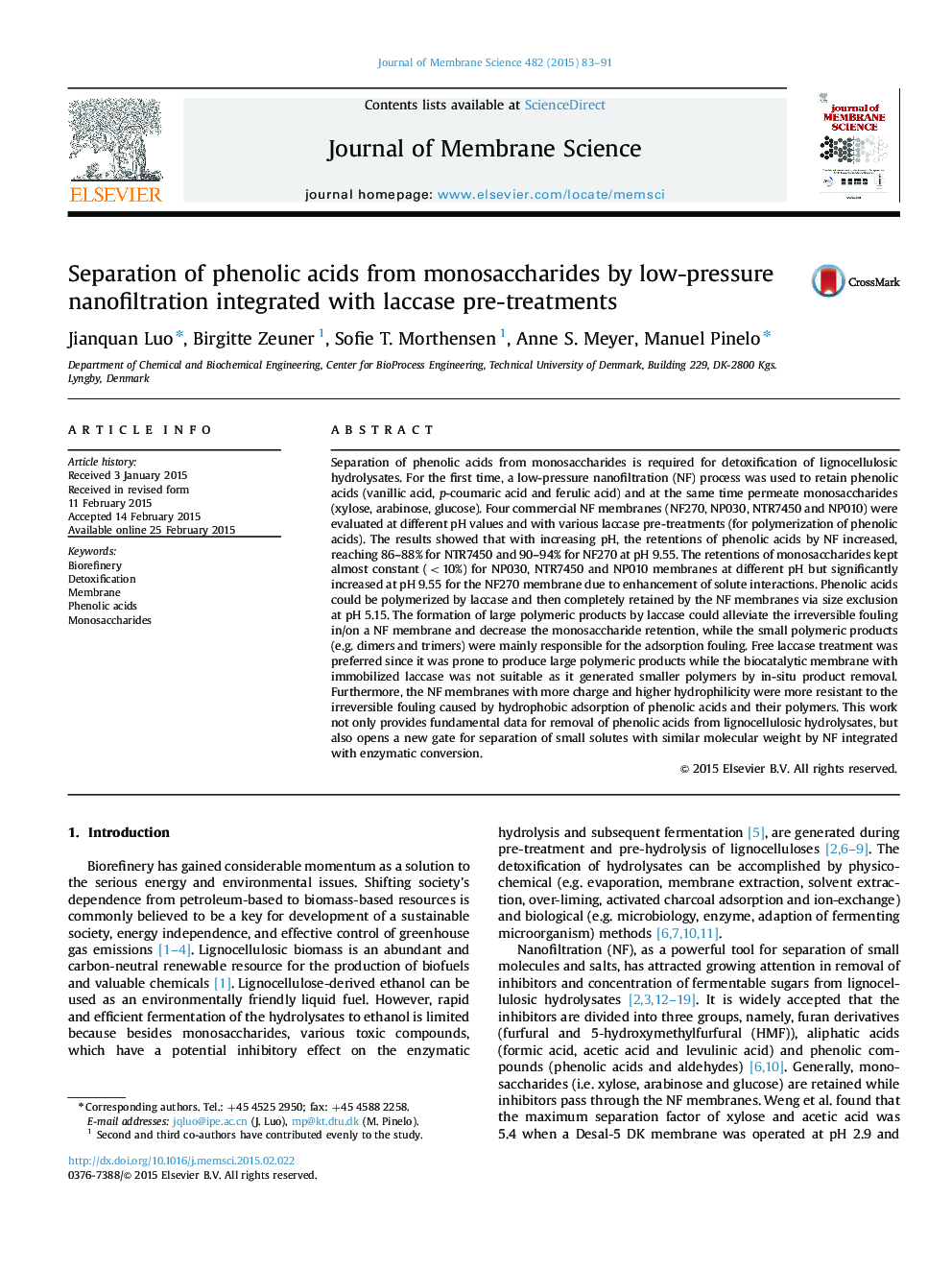| کد مقاله | کد نشریه | سال انتشار | مقاله انگلیسی | نسخه تمام متن |
|---|---|---|---|---|
| 632929 | 1456017 | 2015 | 9 صفحه PDF | دانلود رایگان |
• Charge, size and hydrophobic effects are responsible for phenolic acids retention by NF.
• Monosaccharide retentions increase when more phenolic acids accumulate on membrane.
• Phenolic acids can be polymerized by laccase and then completely retained by NF.
• Small polymeric products of phenolic acids increase the irreversible fouling of NF.
• Biocatalytic membrane produces smaller phenolic polymers via in-situ product removal.
Separation of phenolic acids from monosaccharides is required for detoxification of lignocellulosic hydrolysates. For the first time, a low-pressure nanofiltration (NF) process was used to retain phenolic acids (vanillic acid, p-coumaric acid and ferulic acid) and at the same time permeate monosaccharides (xylose, arabinose, glucose). Four commercial NF membranes (NF270, NP030, NTR7450 and NP010) were evaluated at different pH values and with various laccase pre-treatments (for polymerization of phenolic acids). The results showed that with increasing pH, the retentions of phenolic acids by NF increased, reaching 86–88% for NTR7450 and 90–94% for NF270 at pH 9.55. The retentions of monosaccharides kept almost constant (<10%) for NP030, NTR7450 and NP010 membranes at different pH but significantly increased at pH 9.55 for the NF270 membrane due to enhancement of solute interactions. Phenolic acids could be polymerized by laccase and then completely retained by the NF membranes via size exclusion at pH 5.15. The formation of large polymeric products by laccase could alleviate the irreversible fouling in/on a NF membrane and decrease the monosaccharide retention, while the small polymeric products (e.g. dimers and trimers) were mainly responsible for the adsorption fouling. Free laccase treatment was preferred since it was prone to produce large polymeric products while the biocatalytic membrane with immobilized laccase was not suitable as it generated smaller polymers by in-situ product removal. Furthermore, the NF membranes with more charge and higher hydrophilicity were more resistant to the irreversible fouling caused by hydrophobic adsorption of phenolic acids and their polymers. This work not only provides fundamental data for removal of phenolic acids from lignocellulosic hydrolysates, but also opens a new gate for separation of small solutes with similar molecular weight by NF integrated with enzymatic conversion.
Figure optionsDownload high-quality image (202 K)Download as PowerPoint slide
Journal: Journal of Membrane Science - Volume 482, 15 May 2015, Pages 83–91
